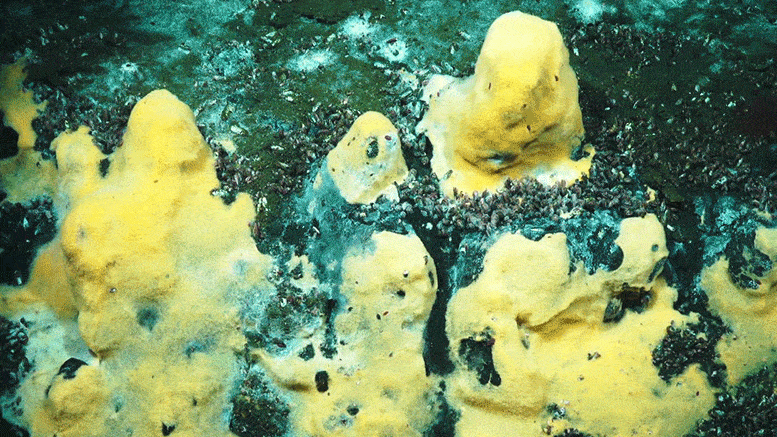
At seafloor methane seeps, it percolates upwards toward the open ocean, and microbial communities consume the majority of this methane before it reaches the atmosphere.
The study published in Proceedings of the National Academy of Sciences collected and examined methane-eating microbes from seven geologically diverse seafloor seeps and found, most surprisingly, that the carbonate rocks from one site in particular hosts methane-oxidizing microbial communities with the highest rates of methane consumption measured to date.
“The microbes in these carbonate rocks are acting like a methane bio filter consuming it all before it leaves the ocean,” said senior author Peter Girguis, Professor of Organismic and Evolutionary Biology, Harvard University.Researchers have studied microbes living in seafloor sediment for decades and know these microbes are consuming methane.
This study, however, examined microbes that thrive in the carbonate rocks in great detail.
Unlike many other types of rocks, these carbonate rocks are porous, creating channels that are home to a very dense community of methane-consuming microbes.
In some cases, these microbes are found in much higher densities within the rocks than in the sediment.
“We discovered the microbes living in the carbonates consume methane 50 times faster than microbes in the sediment.
We often see that some sediment microbes from methane-rich mud volcanoes, for example, may be five to ten times faster at eating methane, but 50 times faster is a whole new thing.
“These rates of methane oxidation, or consumption, are really extraordinary, and we set out to understand why,” said Marlow.“These chimneys exists because some methane in fluid flowing out from the subsurface is transformed by the microbes into bicarbonate, which can then precipitate out of the seawater as carbonate rock,” said Marlow.
The micro-environments within the carbonates may contain more methane than the sediment due to its porous nature.Carbonates have channels that are constantly irrigating the microbes with fresh methane and other nutrients allowing them to consume methane faster.
One possible explanation for the high rates of methane consumption is that the pyrite provides an electrical conduit that passes electrons back and forth, allowing the microbes to have higher metabolic rates and consume methane quickly.
“These very high rates are facilitated by these carbonates which provide a framework for the microbes to grow,” said Girguis.“The system resembles a marketplace where carbonates allow a bunch of microbes to aggregate in one place and grow and exchange — in this case, exchange electrons — which allows for more methane consumption.”.
In all locations, carbonate rocks at methane seeps contained methane-eating microbes.
“Once we clarify how these many interconnected factors come together to turn methane to rock, we can then ask how we might apply these anaerobic methane-eating microbes to other situations, like landfills with methane leaks.”.
